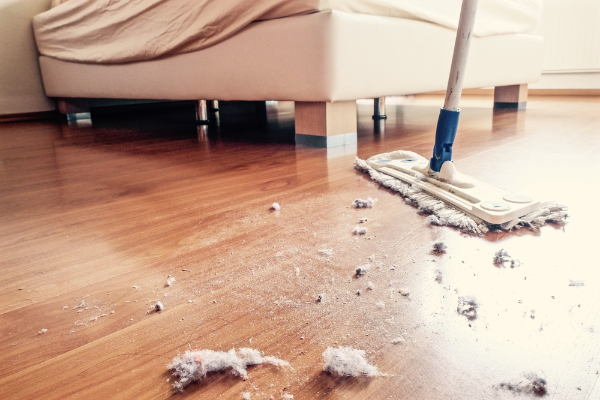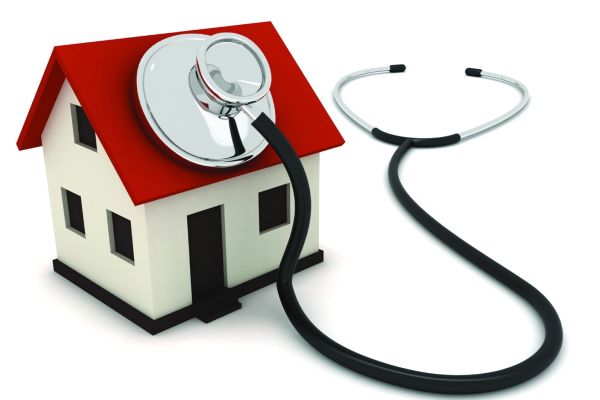Common Indoor Air Quality Problems#
Common problems found in homes can trigger health problems, especially in those with respiratory ailments.
What is mold and what causes it?
Mold, also referred to as mildew, is a common term for fungi and can be found everywhere in nature. Mold spores can be found in the air and on surfaces in your home and can begin to grow when they come into contact with a wet/moist surface. They form mold colonies, which we can see with the naked eye. Signs of mold can include:
- Water stains
- Bubbling, cracking, or peeling on walls, floors, windows, ceilings, or other areas
- Fuzzy or slimy patches of discoloration
- Musty odor
- Visible leaks
What are the impacts of mold growth in my home?
Molds can cause an allergic reaction, asthma attacks, skin or eye irritations, and other health issues. Those especially impacted can include children, seniors, those with respiratory conditions, and pregnant people. The health implications of specific species and amounts of mold are still not fully understood.
How can I prevent mold from growing?
It is not possible to eliminate all mold and mold spores from your home. However, mold colonies cannot grow without moisture, so keeping your home dry is the best method for preventing mold from becoming a problem. Areas that are especially important to keep dry include interiors of walls, crawl spaces, carpeting, underneath sinks, areas around windows and doors, and counter surfaces; since these areas are especially prone to mold growth. Methods for keeping your home dry include running fans when showering and cooking, cleaning up spills, checking for and repairing leaks, ensuring downspouts send rainwater away from the home’s foundation, and using a dehumidifier.
I have evidence of mold in my home. What should I do?
First, make sure you have identified and eliminated the source of moisture, or else mold will simply continue to grow. If the area impacted by mold is less than 10 square feet, you can likely clean the area yourself using this guidance from the EPA.
If the affected area is larger than 10 square feet, professional mold remediation services may be needed. The City of Fort Collins cannot recommend a specific company or contractor for this work.
A note for renters and landlords: In Colorado, the Warranty of Habitability states that landlords must ensure their property does not have any mold growth that could interfere with the health or safety of a tenant. Tenants must make sure that any mold growth is not caused by their actions, such as not using a bathroom exhaust fan. More information on Warranty of Habitability and mold can be found here.
Additional Resources:
Moho#
El moho es un problema común en el hogar. Aprende más sobre las causas, impactos y soluciones para moho aquí abajo. Por favor tome en cuenta, el programa de Healthy Homes no realiza prueba de moho. Una prueba de moho, si es deseada, debe de ser realizada por un servicio profesional.
¿Qué es el moho y qué lo causa?
El moho, también llamado mold o mildew en inglés, es un término común para hongos o fungi y puede ser encontrado en todos lados en la naturaleza. Las esporas de moho pueden hallarse en el aire y en superficies en su hogar, y pueden comenzar a crecer cuando entran en contacto con superficies húmedas/mojadas. Forman colonias de moho, las cuales pueden ser observadas a simple vista. Señales de moho pueden incluir:
-
Manchas de agua
-
Paredes, pisos, ventanas, techos o alguna otra área que burbujee, con grietas, o descamación.
-
Partes con textura vellosa o viscosa
-
Olor a rancio
-
Fugas visibles
¿Cuáles son los impactos del crecimiento de moho en mi hogar?
El moho puede causar reacciones alérgicas, ataques de asma, irritación de piel y ojos, y otros problemas de salud. Los individuos particularmente impactados pueden incluir niños, adultos mayores, y aquellos con diferentes condiciones respiratorias, así como personas embarazadas. Las implicaciones de salud de especies específicas y las cantidades de moho, aún no son entendidas completamente.
¿Cómo puedo prevenir el crecimiento de moho?
No es posible eliminar todo el moho y las esporas de su hogar. Sin embargo, las colonias de moho no pueden crecer sin humedad, así que mantener su hogar seco es el mejor método para prevenir el moho de convertirse en un problema. Las áreas que son especialmente importantes para mantener secas incluyen el interior de las paredes, espacio de acceso bajo el hogar, alfombras, debajo de los lavabos, áreas alrededor de las ventanas y puertas, y superficie de mesetas; ya que estas áreas son especialmente susceptibles al crecimiento de moho. Métodos para mantener su hogar seco incluyen encender los ventiladores cuando se usa la ducha o cuando se cocina, limpiar derrames, buscar y reparar fugas, asegurar que las caídas de agua de lluvia lleven el agua lejos de los cimientos del hogar, y el uso de un deshumidificador.
Hay evidencia de moho en mi hogar. ¿Qué debería hacer?
Primero, asegúrese de que haya identificado y eliminado la fuente de humedad, sino, el moho podría continuar creciendo fácilmente. Si el área impactada por el moho es de menos de 10 pies cúbicos, posiblemente podría limpiar el área usted mismo usando esta guía de la Agencia de Protección Ambiental (EPA por sus siglás en inglés).
Si el área infectada es mayor a 10 pies cúbicos, servicios profesionales para moho y de remediación podrían ser necesitados. La Ciudad de Fort Collins no puede recomendar ninguna compañía o contratista específica para este trabajo.
Nota para rentadores y propietarios: En Colorado, la Garantía de Habitabilidad estipula que los propietarios deben asegurar que su propiedad no tenga ningún crecimiento de moho que pueda interferir con la salud o seguridad del inquilino. Los inquilinos deben asegurarse que cualquier crecimiento de moho no sea causado por sus acciones, como el no usar el ventilador de extracción del baño. Más información de la Garantía de Habitabilidad y moho, podrá ser encontrada aquí.
Recursos Adicionales:
Radon is an invisible, odorless, radioactive gas created during the natural decay of uranium in the soil. Radon is the second leading cause of lung cancer, and can be found everywhere. Colorado is in Zone 1 for radon, meaning that Colorado homes are statistically more likely to have high levels for radon. Radon is drawn into homes and other buildings through cracks and openings in basements, crawl spaces and slabs. Radon levels vary from house to house and have nothing to do with age, quality or upkeep of the home.
Here are some additional resources to learn more about radon:
Asthma is a chronic respiratory disease that can cause asthma attacks which restrict the ability to breathe. Asthma attacks can be triggered by many indoor and outdoor environmental factors. Although there is no cure for asthma, asthma can be controlled through the management of triggers commonly found inside of homes; for example, mold, pests, dust, etc.
Household products that you bring into your home contain chemicals that can contaminate the air you breathe. Some of the health effects include: eye, nose, and throat irritation, headaches, loss of coordination, and damage to nervous system. Consider replacing products labeled Caution, Hazard or Poison with healthy or natural alternatives. Look for the EPA safer choice label on cleaning products.
- Healthy Homes Recipe Book
- Fort Collins Utilities: Hazardous Waste Collection
- Larimer County Landfill: Household Hazardous Waste
- EPA: Safer Choice
- CDC Indoor Environmental Quality
- HUD: About Home Safety
- OSHA: Chemical Hazards and Toxic Substances
- National Institutes of Health: Household Products Database
Particulate Matter#

Cleaning floors and surfaces regularly removes particulate matter aka dust.
Particulate matter, sometimes referred to as dust, is solid particles that often consist of dirt and soil but can also contain ash, soot, chemicals, and other materials.
Healthy Homes encourages Integrated Pest Management (IPM) techniques for the control of pests in and around your home. IPM is an ecosystem-based strategy that focuses on the prevention and elimination of pests by utilizing the least toxic methods to protect your family from harmful pesticides. Pests need food, water and shelter to survive. Eliminating food and moisture sources, and closing off entry points will go a long way towards keeping pests out.
Lead is a highly toxic metal that may cause a range of health problems, especially in young children. When lead is absorbed into the body, it can cause damage to the brain and other vital organs. Lead may also cause behavioral problems, learning disabilities, seizures and in extreme cases, death. Some symptoms of lead poisoning may include headaches, stomachaches, nausea, tiredness and irritability. Homes built before 1978 are of particular concern for cracked and peeling paint. Dust from cracked and peeling paint can permeate the air you breathe inside your home.
Asbestos is a naturally occurring fibrous material that was a popular building material from the 1950s to 1990s and is still in limited use today. It is now known that asbestos can cause many forms of cancer. Disturbed asbestos (cracked or broken) can cause harmful particles to infiltrate the air in your home. Professional assistance with testing and removal of asbestos is strongly encouraged.
Take Action and Improve Indoor Air Quality#
The Healthy Homes program provides resources to help address indoor air quality issues. Visit our home assessments page where you can learn how to use our Healthy Homes Do-It-Yourself app, or schedule an in-home assessment with our Healthy Homes Educators.
